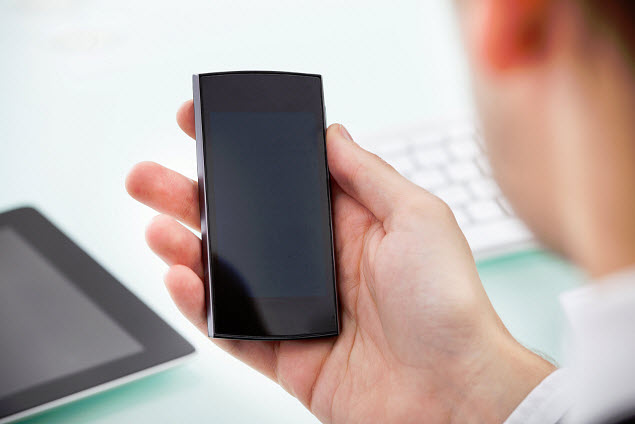A recent study has revealed that these programs are leading gadgets to be wiped as a regular practice.
According to the Fiberlink division at IBM, and a recent data analysis that they have conducted, one of the biggest smartphone trends in BYOD programs is to remotely wipe mobile devices.
This feature is proving itself to be exceptionally popular among enterprise clients who run these programs.
The figures from Fiberlink have shown that among the users of the MaaS360 cloud platform, there are currently an average of 450 mobile devices that are being wiped on a daily basis. This makes the practice a considerable one among smartphone trends in businesses. This platform is based in Pennsylvania and is used for the management of millions of cell phones and other gadgets in enterprises worldwide.
Among smartphone trends in the enterprise community, this has become a sizeable one across all of its verticals.
 What the data analysis showed was that while there are many different Mobile Device Management (MDM) features available through the MaaS360, it is the device wiping that has seen some of the largest growth across all of its verticals.
What the data analysis showed was that while there are many different Mobile Device Management (MDM) features available through the MaaS360, it is the device wiping that has seen some of the largest growth across all of its verticals.
For every three minutes of the day, enterprises are now wiping another device. This means that in the average day, 450 smartphones and tablets are wiped, which represents a massive 130,000 in the last year. Moreover, Fiberlink pointed out that this represents the equivalent of between 10 and 20 percent of the total average device fleet for the firm in the last year.
What the firm means when it says that a “wipe” has been conducted, is either of two different activities. The first is a complete wipe, which was the case in about one of every three gadgets that were wiped. The second is a partial wipe, which is made up by the other two out of every three mobile devices.
The smartphone trends showed that approximately half of these remote wipes by businesses occur automatically while the other half is specifically initiated by an administrator. Among the top reasons given for the automatic wiping, the lead was that the gadget has become “jailbroken” (which has to do with Apple smartphones and tablets), as opposed to being lost or stolen.
Dubai police intend to equip detectives with Google’s wearable tech.
As part of Dubai’s plan to make its police force one of the “smartest in the world” by the year 2018, the emirate’s police department wants to provide beat officers and eventually detectives with Google Glass, enabling its law enforcement officers to run customized facial recognition software.
Facial recognition technology could help fight crime.
According to Reuters, a police spokesperson from the most populous city and emirate in the United Arab Emirates (UAE), confirmed that Dubai police developed the software and would permit a link between a database of wanted people and the wearer. Essentially, as soon as the wearable device recognizes a suspect via the facial recognition technology, the wearer of the optical head-mounted display is alerted.
Colonel Khalid Naser Al Rzooqi, the director general of Dubai police, informed 7DayinDubai that “The software that we developed internally enables us to connect a database of wanted people with the glass.” He added that “Once the glass recognizes the suspect based on a face print, it will give an alert to the officer wearing it.”
 The gadget featuring the software is to be introduced gradually in phases. The initial phase would focus on combating traffic violations and tracking vehicles that are suspected to have been involved in driving offenses. The second phase would involve having the technology issued to detectives.
The gadget featuring the software is to be introduced gradually in phases. The initial phase would focus on combating traffic violations and tracking vehicles that are suspected to have been involved in driving offenses. The second phase would involve having the technology issued to detectives.
Google Glass isn’t cheap but Dubai is willing to spare no expense when it comes to its police force.
Glass is a costly gadget that sells for $1,500 in the United States. This makes the device far out of the affordable range for the average consumer. However, Dubai is determined to equip its law enforcement with the device. In addition, more businesses are beginning to warm to the idea of using this innovative wearable, which is also beginning to be used in hospitals.
Despite many people being worried about their privacy when Google Glass is worn in public, as the concern is a Glass user could be secretly taking photos or videoing a person without their consent, if policemen were to wear it, the purpose would be to help officers collect information during an investigation.
 What the data analysis showed was that while there are many different Mobile Device Management (MDM) features available through the MaaS360, it is the device wiping that has seen some of the largest growth across all of its verticals.
What the data analysis showed was that while there are many different Mobile Device Management (MDM) features available through the MaaS360, it is the device wiping that has seen some of the largest growth across all of its verticals.
 The gadget featuring the software is to be introduced gradually in phases. The initial phase would focus on combating traffic violations and tracking vehicles that are suspected to have been involved in driving offenses. The second phase would involve having the technology issued to detectives.
The gadget featuring the software is to be introduced gradually in phases. The initial phase would focus on combating traffic violations and tracking vehicles that are suspected to have been involved in driving offenses. The second phase would involve having the technology issued to detectives.